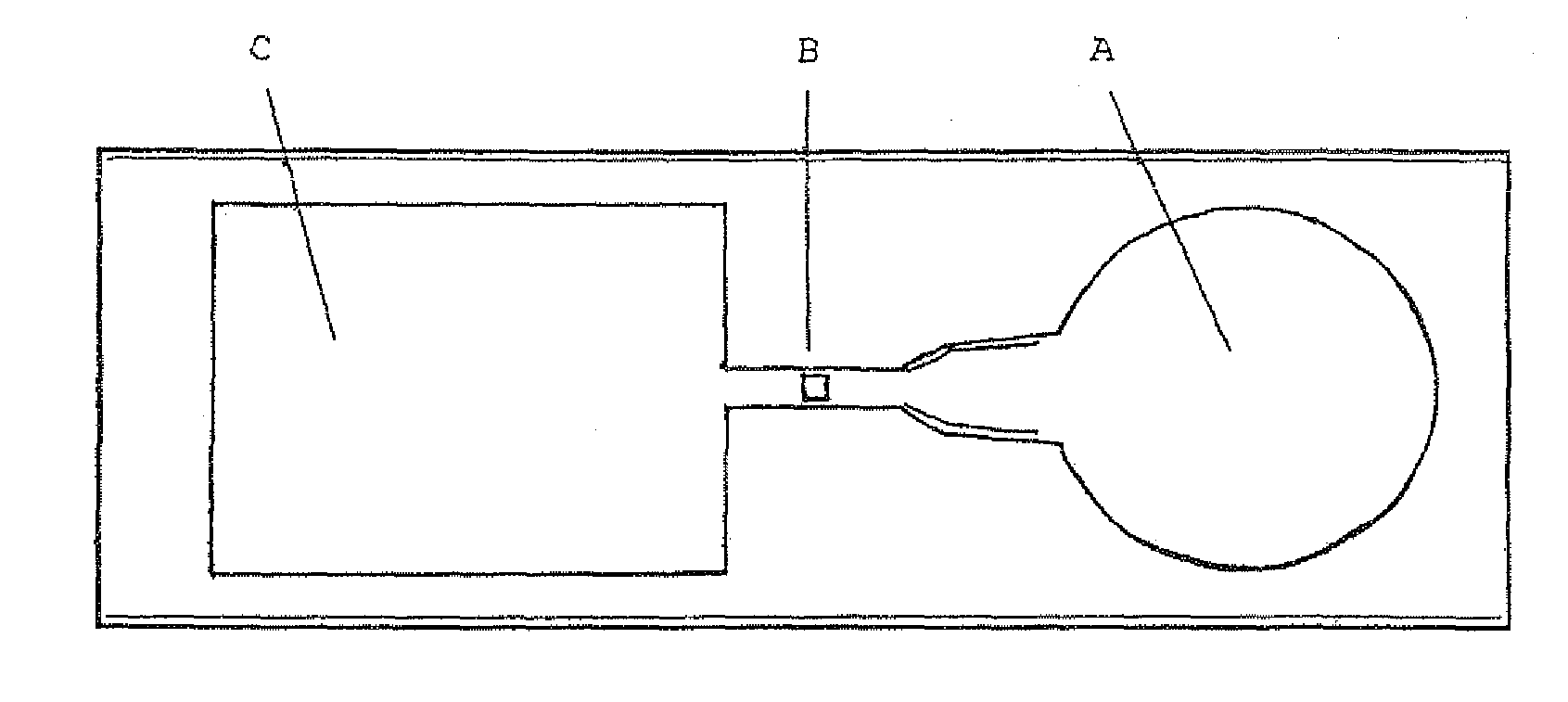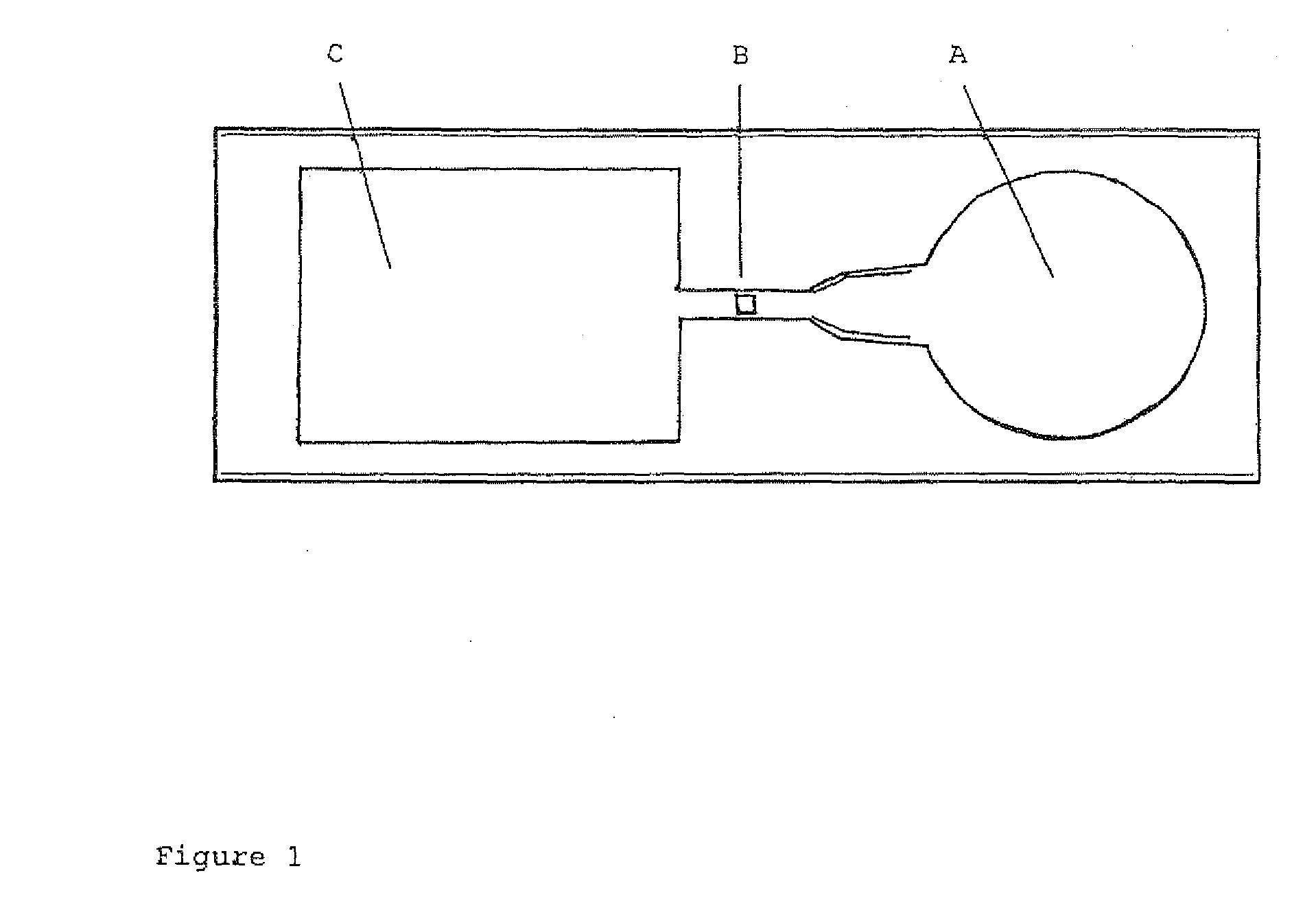Capillary driven assay device and its manufacture
a capillary-driven assay and assay technology, which is applied in the field of surface hydrophilization and antibody immobilization, can solve the problems of imposing limitations regarding the modification of surface properties, including hydrophilicity, and achieve the effect of improving the capillary-driven assay devi
- Summary
- Abstract
- Description
- Claims
- Application Information
AI Technical Summary
Benefits of technology
Problems solved by technology
Method used
Image
Examples
examples
[0082]Plastic substrate chips made of Zeonor® (Zeon Corporation, Japan) were oxidized in oxygen plasma. The oxidation took place during 6 min in a plasma chamber (400 Plasma System) at a working pressure of 0.26 mbar, 1000 W and with a flow of oxygen at 100 ml / min.
[0083]Two different approaches for silanization were employed. Gas phase silanization was carried out in a Solitec BPM-2000 chamber with a batch size of three chips. In each deposition, 250 μl of APTES (Fluka) were applied on a watch glass placed on the hot plate (80° C.) in the chamber. Deposition was carried out for 15 minutes at a working pressure of 25 mmHg. As a result of the limited production capacity of the gas phase deposition chamber, a liquid phase deposition method was also used. In this protocol, the chips were immersed in a solution of 3 vol % APTES in 95% ethanol (Kemetyl, Sweden) for 2 hours. The chips were rigorously washed in ethanol and MilliQ-H2O. For both approaches, the silane layer was cured over nig...
PUM
| Property | Measurement | Unit |
|---|---|---|
| pH | aaaaa | aaaaa |
| volume | aaaaa | aaaaa |
| concentration | aaaaa | aaaaa |
Abstract
Description
Claims
Application Information
 Login to View More
Login to View More - R&D
- Intellectual Property
- Life Sciences
- Materials
- Tech Scout
- Unparalleled Data Quality
- Higher Quality Content
- 60% Fewer Hallucinations
Browse by: Latest US Patents, China's latest patents, Technical Efficacy Thesaurus, Application Domain, Technology Topic, Popular Technical Reports.
© 2025 PatSnap. All rights reserved.Legal|Privacy policy|Modern Slavery Act Transparency Statement|Sitemap|About US| Contact US: help@patsnap.com



